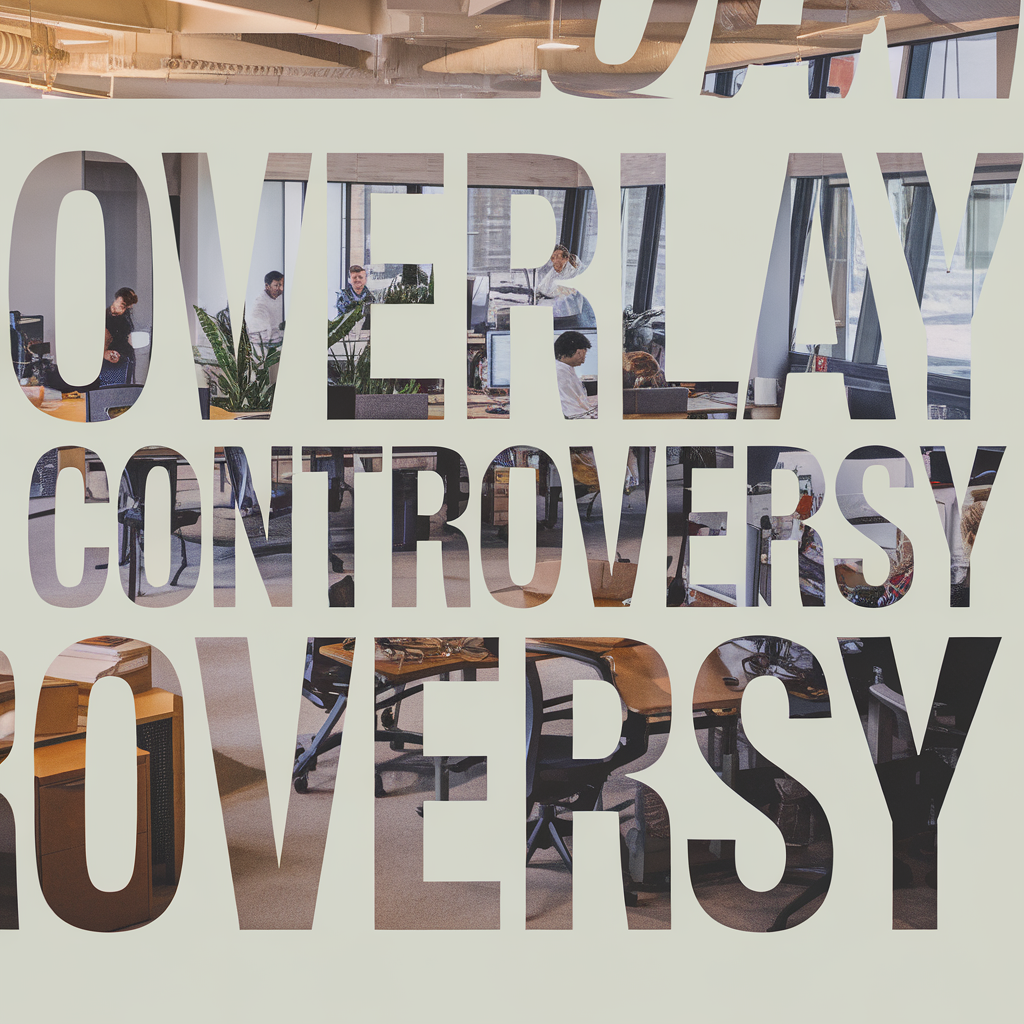Hello there, rockstar! You've stepped onto the ever-twisting world of tech-preneurship – where every mouse click can open doors or…cue suspenseful music… direct you face-first into convoluted accessibility problems. Let's face it, these pesky predicaments can feel like navigating a spaghetti junction without a map…yikes! But, hey, don't let these roadblocks deter your entrepreneurial spirit! Hold onto that can-do attitude, because today, we’re lifting the veil on these mysterious accessibility conundrums and their solutions. Consider this your pocket blueprint—informative, packed with clear-cut comparisons and respectful of your no-nonsense approach. Also, let's keep this chat as warm and friendly as your favorite cup of joe. Ready to trade confusion for clarity, step over hurdles, and turn ‘unknown territory’ into your innovative playground? In this one-stop-fun-shop, we walk through the frontier of accessibility problems, tip-toe into various solutions and cap it off with a frothy swirl of transparent pricing comparisons. What's waiting for you here is more than just information. It's a wild ride filled with delightful discoveries, where you weave through grueling tech jungles and move mountains—with a little dash of fun thrown in for good measure! Here's to no more fear of unknown tracks and tricky turns. The starting line is right in front of you—let's commence this riveting expedition, shall we?
Understanding Accessibility Problems
Opening our journey into the heart of accessibility problems, think of technology as your favorite luxury car. An entrepreneur, you secure the keys–only to find that you can't open the doors. The seat is also placed too low or maybe all the control buttons are placed on one side of the steering wheel, turning your cruising experience into a nightmare. That's what accessibility problems feel like to those who encounter them; it simply means that a certain bunch of users just can't fully access or use the technological tools or features. Delving deeper, these obstacles can be as broad as a mountain or as narrow as a hairline. One the one side, we have general usability issues affecting a larger user base. These are like the locked car doors or the misplaced buttons that make things unpleasant for pretty much for everyone. On the other side of the canyon, we find problems specifically affecting users like those with physical or cognitive impairments—a pile of rocks scattering their pathway to effective tech usage. They might struggle with poor color contrast, inadequate font sizes, lack of keyboard navigation options – these challenges present grave complications that could hinder their everyday interaction with technology. Here's the twist, though: these problems—general or specific—might seem like two different creatures, but the reality paints a different picture, my fellow entrepreneurs. Both spring from a lack of consideration during system design and impact usability. Their common root gives us room for potentially game-changing solutions—like a mechanic who can unlock doors and reprogram buttons. Think of you cruising smoothly, we'll continue our exploration by delving deeper into the tangles and knots in our next section. We'll spotlight some practical examples of these so-called pitfalls, folks. Get ready for a wild ride! Hang onto your hats and let's plunge further into the less-explored caverns of accessibility problems lurking in our tech-world. Buckle up for an adrenaline-charged adventure— you never quite know what’s around the corner…
Exploring Different Options
Moving forward in our comparison, let's dive headfirst into the world of accessibility issues. Consider two tech startups: One lapped up all the tech bells and whistles, focusing heavily on innovative features and eye-catching design. Meanwhile, the other chose to prioritize accessibility from the get-go, avoiding any functionality snafus. Sure, it may not wow you with ultra-chic aesthetics, but let's dig a bit deeper to see who'll actually fly higher in the accessibility minefield. Imagine you are an entrepreneur, and you've just jotted down the perfect business idea on a napkin (classic!) but suddenly realized your all-singing, all-dancing website has huge accessibility problems. Customers can't navigate effectively due to complex menus. Worse still, it isn't compatible with assistive devices for visually impaired users. Now picture this negativity ricocheting back in the form of frustrated users dropping off your site. Let's call this tech-boom gone bust, Startup A. On the other hand, Startup B, with its down-to-earth layout and user-friendly design, seems bland at first sight. Still, it does wonderfully well with one magical ingredient: universal design. Right from web navigation to on-screen reading aids, it’s got all things accessibility on point. Not so bland now, huh. Its universal approach might seem like small fry initially, but it’s shaking up the game. In a market increasingly aware of the cruciality of inclusivity, a poorly navigated website isn't just a tech issue—it's an opportunity killer! There's nothing more soul-crushing than hearing, "We love the concept, but your platform just isn't accessible!" Robust technology should be like a fancy cook-off show where all ingredients are vital, but something as paramount as accessibility can't be tossed in as an afterthought salsa. Google's hungry and how! The more accessible your site is, the higher it could rank, and boy, don’t we all want to throw our fists in the air for that victorious SEO moment! So join the revolution and abandon the land of hustling and bustling overgrown tech jungles. Bring forth swapping out design snazziness with intuitive simplicity for everyone's sake. After all, if tech’s the king, accessibility is the queen holding court, right?
Key Features of Accessibility Problems

Continuing our examination, let's foray into the meatier discussion of the key features of accessibility problems. Ever thought about why some entrepreneurs stumble trying to scale their tech-based business? Often, it's because they overlook or underestimate—hold onto your hats, folks—the ubiquitous accessibility problems. Let's start with two significant elements: the design interface and content readability. No points for guessing that the design interface should be uber user-friendly—kind of like a comfy old pair of sneakers that you know precisely how to navigate. An uncompromising screen reader and keyboard accessibility are akin to having a GPS in your sneaker—bonus! However, if either of these elements gives a tech-entrepreneur trouble, then—bam! It's a real swing and a miss because their offering becomes frustratingly inaccessible to a large population of users. On the flip side, let's volley over to content readability as doing a quick sidestep. You don't want your content to read like an engineer's PhD thesis—not everyone shares your in-depth knowledge, remember? You aim to have clear, understandable text and helpful visuals that can transform impenetrable techno-jargon into laid-back Sunday afternoon riddles. So, accessibility problems essentially tilt on these axes—that pal-o-mine design interface and our book-club member, content readability. Too much energy on one without the other is like trying to ride a bicycle with one pedal. It's ten times tougher to nurse a mangled sense of balance on such a wild ride, isn't it? Darn right, it is! So, entrepreneurs, be vigil, keeping both in mind will help you mediate these twin axes of tech–accessibility issues. Give it your best shot, and see where it takes your venture. It might just be the ticket to turning your pyrrhic challenge into a shining success. High stakes, we know, but then again, what’s an adventure without a bit of risk, eh?
Benefits of Addressing Accessibility Problems
Stepping into the shoes of various users with assorted ranges of abilities can feel like a funhouse of mirrors. But, trust me, when you address accessibility problems, you're doing more than just saving your business from a proverbial belly flop. And here's how. You might think adjusting for user accessibility issues is like nailing jello to the tree. But, once you throw your heart over that hurdle and take on the voracious challenge, the benefits are more significant than dodging a squishy landmine of legal risks. By optimizing for accessibility, you're not only saying "Howdy!" to a broader customer base, but you're also ramping up your SEO potential. Because hey, search engine crawlers and screen readers pretty much speak the same language. So when you fix accessibility problems, you're also grabbing search engines by their virtual lapels. It's a nifty velvet rope of interconnected benefits. But let's not get lost in the digital woods here. Look at the other side of the coin, too. When businesses turn a deaf ear to this nagging issue, they metaphorically gum up the works for buttloads of potential customers. Not addressing these problems is like offering a beautifully cooked meal, but forgetting the cutlery – which does sound like a fun challenge, just not one you want for your clients. It slams doors, not only on business possibilities but also on the universal openness that we’re so fond of speaking about in tech. And honestly, who wants to be that heartless? So, let's chum up to that challenge – it's not a bear we can't wrestle. Web accessibility issues can be a prickly pear, but remember – no dark alley is as creepy as the fear that led us into it. Opening up your digital space to everybody, regardless of ability, isn't just a sprint toward legal dodging or better rankings, it's our obligation. And the best part? The rainbow of benefits on the other side. So, ready to strap on that explorer hat and silver the ride? All aboard!
Drawbacks of Ignoring Accessibility Problems
Continuing our examination of "accessibility problems," let's move into the murkier waters of the drawbacks of sidestepping these issues. Imagine you're a bustling entrepreneur in the tech world. You've got a revolutionary product—a striking new type of robot vacuum cleaner that not only cleans out the tiniest bits of dirt in your rug but makes sandwiches while doing so. Cool, right? But now, consider this: What if certain customers can't get this hip new device to do its thing due to a lack of accessibility? Being overly dismissive of accessibility issues can be like playing hide-and-seek in the dark—see any problems? On one side of the comparison, ignoring these can speed up your production cycle. You're not spending time making everything user-friendly, so things might roll out faster. Quick gains, right? But is it worth it? Swiveling to the opposite end, the emotional sting of encountering an inaccessible product can effectively push away potential customers. Not good, right? Even worse, the neglect of accessibility could come back to haunt you, morphing from a minor inconvenience into a leviathan-sized legal fiasco! So yes, it might feel simpler just to ignore those niggling accessibility problems at first. But it's a risky gamble. If your innovative sandwich-making robot vacuum excludes a part of your potential market due to inaccessible design, you'll be playing the sorry role of the clown who dropped the cake. Surely, you wouldn't want that! There's your valid comparison illustrating the not-so-cool side of ignoring accessibility issues. By turning a blind eye, you might potentially lose an immense pool of enthusiastic customers. You're an entrepreneur with a vision, guided by the core values of transparency and openness, right? Don't wait for things to hit the fan. Pause, take a look around, address those seemingly minor issues, and ensure everyone can make sandwiches while vacuuming. Sounds better, doesn't it?
Pricing Comparison for Accessibility Solutions
Expanding on the differences observed, when venturing into the terrain of accessibility solution pricing, the 'one-size-fits-all' approach zips up all wrong like an ill-fitting wetsuit. You see, every entrepreneur's journey is unique, and hence, comparisons can be as tricky as juggling flaming torches. Consider the high-flying accessibility software packages that act like a Swiss army knife, tackling a multitude of "accessibility problems". Though flush with features like automatic content adjustment and voice-recognition capabilities, they come with eyebrow-raising price tags—a hefty hit that may make burgeoning entrepreneurs wince. On the chase-the-sunset side, there are budget-friendly solutions engineered for your single-seater startup. They may lack some advanced elements, like tackle-the-beast-high-tech recognition systems, but these can be sidestepped if they're currently as necessary to your business as a fish needs a bicycle. Then comes the freemium models—a generous scoop of basic capabilities with sprinkles of advanced features dangled as optional extras. They're like your local pizza joint letting you taste the margarita and offering additional toppings for an extra fee. They grant entrepreneurs the freedom to tailor the solution to fit their business, which is just as snug as a well-worn pair of jeans. Moving forward in our comparison, don't let your budget steer entirely. At times, the upfront savings from a cheap solution might result in hidden costs further down the line, like repair jobs for a second-hand jalopy. Consider the long-term impact—the aim is to fuel the growth engine of your venture without incurring accessibility pitfalls. So, why not whip out the metaphorical magnifying glass and examine the different pricing strategies? Like any good treasure hunt, wrestling with accessibility problems is full of unexpected turns, but when you stumble upon the perfect fit, it's like discovering a dusty bottle of priceless, hand-scrawled wisdom from an aged seafarer. In deciphering its contents in this vast ocean of information, we hope you find the guidance that's just right for you! Remember, in the realm of entrepreneurship, sometimes the windfall is in the journey as much as the destination.
Conclusion
And there we have it, a journey full of twists and turns, exploring the unique world of "accessibility problems." Sounds like a Sci-fi adventure, doesn't it? But it's as real as the money in your pocket and as impactful as the choices you make every day for your business' success. Each path we dug deep, unveiling perplexities, and solving dilemmas just like real-life superheroes! We unpacked the reasoning behind the issues, and then strutted our way through the essence of accessibility matter in the vast expanse of the digital technology universe. Remember the startling advantages of addressing these issues, right? Pretty impressive gains, eh? And let's not even get started on the hefty price you could pay for ignoring them – totally not worth it, my friends! From pricing evaluations to sidestepping potential hurdles, we've just about covered everything you need. Bear in mind, it's not just about choosing an option for the now, but making a decision for the future. You know how they say, "If you don't take care of your business, your business won't take care of you"? So, dear entrepreneur buddy, the baton is yours now. Take these nuggets of wisdom, do a little extra legwork, and make the most enlightened decision that your future-self will thank you for! As captains of not just our ships, but our digital interfaces, ensuring a voyage free of accessibility problems is also in our hands. After all, it's about steering our ship towards success through the beautiful tech nebula, with all its treacherous accessibility asteroids! Why not give the whole 'taking responsibility of your digital interface' a whirl? Take a punt at addressing your platform's accessibility issues, um… today! Distinctly taking that step forward may feel like venturing into the unknown, but remember, every great adventure starts with the first step. So, entrepreneurs of the cosmos, heed my call; take the leap of faith, answer the cry of your website's usability! Make a conscious choice today to champion digital transformation. Let's script an unfolding tale of tech-innovation, usability, and accessibility! Choosing to address your platform's accessibility is choosing to be the best version of your business-self. Remember, in this journey of entrepreneurship, you're not alone. With openness, with transparency, we'll stride together, addressing entrenched pain points like accessibility one byte at a time. Let's make technology not just about ones and zeroes but about inclusivity and accessibility for every one out there! Let's fuel this cutting-edge machine with compassion and commitment. Because, remember, a better digital future is not just a dream, it's a possibility! So, here's to you, fellow navigators—ready for takeoff! Let's shine a light into murky corners of accessibility problems and reveal technology's true potential. Let's get going, shall we? Brace up and dare to make an informed choice today. Because nothing spells success more than proactive decision-making sprinkled with a bit of setting sun glow (read sunshine metaphor) and a whole lot of tech clarities (accessibility solutions).
FAQ:
FAQ Section What are the key features of accessibility problems? Accessibility problems often revolve around a lack of inclusivity in design elements. These can range from inadequate text size, unsuitable color contrasts, to non-responsive designs that don't adapt to various device screens. Complex navigations, absence of captions for videos, and lack of alt text for images are also common features. These issues can halt the user-interface for people with visual, hearing, motor, or cognitive disabilities. Thus, addressing these problems is pivotal to create an equitable and user-friendly digital environment for all. Why is addressing accessibility problems beneficial? Addressing accessibility problems not only allows for the inclusion of a broader audience but also enhances user experience for everyone. They make web or app navigation more intuitive, eliminate potential barriers, and consequently, can increase the user base, boost user engagement and satisfaction. All these contribute to improving brand reputation and customer loyalty. Besides, complying with accessibility norms also helps to avoid potential legal issues related to discrimination. How important is cost analysis when addressing accessibility problems? A comprehensive cost analysis is crucial before adopting an accessibility solution. It's important to consider both the initial investment and the ongoing cost, such as maintenance, updates, and potential upscaling as your business grows. However, it's also necessary to weigh this financial expenditure against the improved user experience, wider reach, potential business growth, and avoidance of legal complications. Make note: the benefits of implementing efficient accessibility measures often outweigh the costs.


